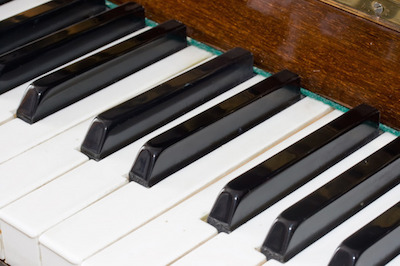“I am considering buying a used grand or baby grand piano for my home. I’ve played piano since I was a kid, and now that I’m approaching retirement, I would like to spend more time playing. I want an acoustic piano, not a digital, and having the old, elegant style becoming a centerpiece in my living room is as important as the music it creates. I know a lot about playing the piano, but I’m not sure about selecting a quality piano that will last me for years. What should I look for in a used piano before buying it?”
Great question. And because of the amount of used pianos there are on the market today, it’s one we get quite frequently. Putting looks and sound quality in the forefront of your mind is an important starting point.
Other things to consider:
The condition of the piano
The best place to start is with a quick overview of the piano inside and out. You can quickly tell if a piano has been well cared for, or if it has been neglected. Look for signs of neglect and signs of abuse. You can also judge based on where the used piano is – a piano in the corner of a dark and humid basement will tell a different story than one on a piano dealer’s showroom floor.
The value of the piano
No, you don’t have to invest in a Steinway to have a quality piano in your home. However, certain brands will provide a higher quality tone. Ask questions about the brand and do a little research online before you buy. You can learn fairly quickly about the pros and cons of each piano brand.
Look at the interior
The soundboard is a wooden plate at the bottom of the case. All reinforcement ribs should be properly glued and in place. The bridge should be solid, straight, and uncracked. The strings should be properly conditioned and in place. Look for deep grooves on the hammers; the more worn they are, the more harsh tonal quality will be. The pin block should also be evaluated to make sure pins are properly placed and aren’t loose or broken.
Look at the exterior
Are pedals attached? Do they move properly and impact the tonal quality? Are all keys in place? Strike every key to make sure it plays and functions properly. If it sounds like they strike twice, are dead, or seem sticky, it’s a sign repair is needed to bring it back into proper working condition. Also look at the finish. If its faded or shows weather damage, you can assume it wasn’t well taken care of.
Ask about the history
One simple question can release a lot of clues about a piano’s well being. Many people will launch into a long, elaborate story about where the piano originated from, and the status of the piano over time. While it may not be a fail-safe way to determine quality, you can make instant judgement calls when someone says “It was stored in the shed for decades” versus “It sat lovingly in my grandmother’s living room for years.”
How much immediate repair the piano will need
As you analyze each part of the piano, you can quickly determine how much money will go into repair before it is operational. A used piano sitting on a dealer’s showroom floor will be ready to play the moment it arrives in your home. A “good deal” on Craigslist may require months of work and hundreds or even thousands of dollars of repair work to bring it into playable condition.
How well will the piano fare while being moved
You can’t throw a grand piano in the back of a truck and expect it to fare well during travel without a little TLC. Look for weak points and make sure they are well kept and preserved during the move.

